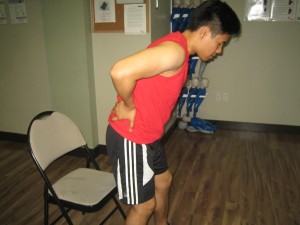Sciatica often causes burning pain that radiates down the rear part of the leg or a dull throbbing sensation in the buttocks. This pain is triggered by pressure placed on the sciatic nerve. Once the nerve is under pressure, it transmits pain signals that can radiate down the length of the nerve or localized in a specific region. In addition, the muscles innervated by the nerve may or may not be directly affected.
Causes of sciatica
Sciatica has various causes and any condition that adds strain on the sciatic nerve will trigger pain in the lower back, back of the leg and the buttocks. The pressure can originate from the vertebral discs, muscles or bones. The cause of sciatica can be acute or long-lasting.
A disturbing event can result to injury to the inferior back or hip region, thus adding pressure on the sciatic nerve through spasms of the muscle, misplaced bones or inflammation from injury.

The chronic causes of sciatica can be due to muscle imbalances, narrowing space in the vertebrae or misaligned bones. The conditions that typically cause sciatica include herniated disc, piriformis syndrome, spinal stenosis and isthmic spondylolisthesis. Remember that muscle imbalances are common among these conditions. Understandably, treatment and correction of the muscle imbalances is vital in the recovery and prevention of sciatica.
Signs and symptoms
It is important to note that sciatica is categorized as pain involving the sciatic nerve. The pain can be dull, sharp or burning. It can be localized in one area or radiate the entire length of the nerve.
The pain is often experienced in the lower back and buttocks and often spreads down the rear part of the leg. Sneezing, coughing, squatting or prolonged periods of sitting can increase the pain. The muscles that are innervated by the sciatic nerve can also cramp or spasm, resulting to additional pain. The common signs and symptoms include the following:
- Pain that varies from aching, dull, burning, sharp
- Weakness due to diminished ability to transmit signals along the pathway
- Numbness along the nerve pathway
- Cramping or spasms are caused by partial signals being sent via the nerve pathway
- Tingling can be felt in the lower legs and feet
Management of sciatica
If sciatica is caused by an acute injury, the initial step is to treat the injury. The RICE method (rest, ice, compression, elevation) can be used for the first 48-72 hours. By minimizing the inflammation caused by the injury, it will help reduce the soreness.
After the initial 72 hours, heat can be used to warm and relax the muscles around the nerve. Stretching the muscles of the lower back and hip will also reduce the stress on the nerve. Once tolerable, the individual should perform light exercises to strengthen the injured muscles.
Cases in which sciatica is caused by a chronic condition would require correction of the underlying issue that caused it in the first place.
